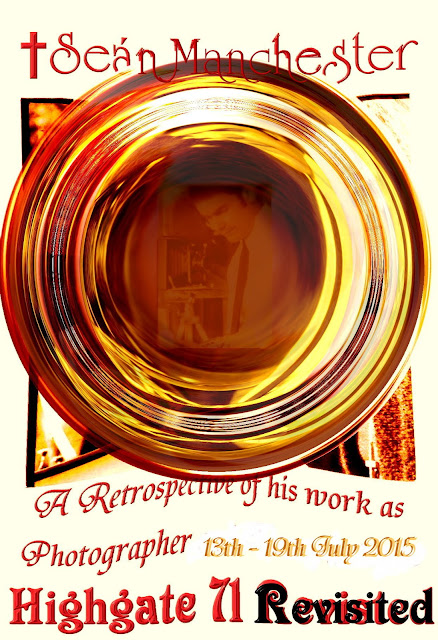Jacqueline Simpson was born in 1930 and is a resident of Worthing, Sussex. She was president of the Folklore Society from 1993 to 1996 and has also been its honorary secretary. She published exceptionally misleading and grossly inaccurate statements in a book she co-wrote called The Lore of the Land, having placed reliance on her American colleague Bill Ellis whose flawed material inRaising the Devil is equally, if not more, unreliable. Some of the press cuttings referred to in Ellis' book are wrongly attributed and his writing is exceptionally biased, as is Simpson's for the same reason, because the supernatural is summarily dismissed. Ellis wrote the following response when Seán Manchester brought to his attention irrefutable evidence - in the form of copies of original reports - of his many erroneous and false attributions: “... we agree that the contemporary press handling was often inaccurate, and that most subsequent discussions were even more distorted. ...”
Jacqueline Simpson’s terse response to Seán Manchester's concern over her damaging mistakes being repeated in a pending second edition of The Lore of the Land were to appear on the internet:
“Wording changed to 'young people' and 'young man'. Name of organisation dropped, Farrant referred to simply as a 'member' of 'a group of young people interested in the paranormal.' Words 'which the paper called' inserted. No reference now to who did the challenging. Instead, neutral phrasing in allusion to press reports: 'rumours spread that a magical duel ...' The other points are rejected, and no changes will be made there.”
Unlike Bill Ellis, she has always refused to engage in any correspondence with Seán Manchester who kindly sent her copies of newspaper articles and a complimentary CD relevant to the Highgate Vampire case. While she proved most unfriendly towards Seán Manchester, she gladly agreed to speak at Farrant's Symposium held over a Highgate pub in July 2015 in order to dismiss the Highgate case further whilst inserting unprofessional, untrue and snide comments about Seán Manchester.
This is how some supposed “scholars” apparently operate. Simpson's paperback edition contained an incorrect date for a crucial newspaper article about the mysterious death of foxes even though she had cleared that up to her own satisfaction in advance. All reference to Seán Manchester's episcopal standing, albeit not entirely accurate in the first edition, was completely expurgated. She seems to know next to nothing about the case apart from what other people have published or claimed on the internet. Yet Jacqueline Simpson is entirely responsible for the Wikipedia entry about the Highgate Vampire. What she has written is full of error and totally reliant on her colleague in the United States who opted to interview Farrant in July 1992. It had already been established that he would not be able to interview both David Farrant and Seán Manchester. He had to choose. Farrant obviously provided Bill Ellis with highly prejudiced material and selected press cuttings most favourable to himself.
Bill Ellis coverage of the so-called occult duel is based on whatever press cuttings he was given by David Farrant. Ellis, therefore, provides only Farrant’s perverse version of what was described in the sensational press as a “magical duel” in 1973. Ellis writes in his book Raising the Devil: “Shortly before the event, a tabloid press article muddied the water by claiming that both Manchester and Farrant intended to slaughter a cat in front of an assembly of naked witches.” Ellis does not identify the newspaper in his text, but this is what the Sunday Mirror, 8 April 1973, actually reported alongside a photograph of Farrant with a naked girl: “The bizarre ceremony will involve naked witches, demon-raisings and the slaughter of a cat.” Seán Manchester is quoted, saying: “My opponent intends to raise a demon to destroy me by killing a cat - I will be relying solely on divine power.” Farrant insisted: “Blood must be spilled, but the cat will be anaesthetised.” The Sun newspaper, 23 November 1972, had earlier quoted Seán Manchester stating that Farrant’s boasts ought to be put to the test: “The quickest way to destroy the credibility of a witch trying to earn a reputation for himself is to challenge his magical ability before objective observers.” Yet unlike the print media, who did invite versions from both sides, no balancing comment was sought from Seán Manchester by Ellis, and certainly not by Simpson. Seán Manchester told what really happened in a work Ellis refers to in passing in his text - From Satan To Christ - which he nonetheless chose to completely ignore. The notorious posters advertising the “duel” were traced at the time to David Farrant who had engaged a small printing company used by him on earlier occasions. Ellis repeats Farrant’s falsehood to imply that Seán Manchester was responsible for these posters. Yet even Brian Netscher, editor of New Witchcraft, revealed in his magazine’s first issue: “As to the ‘test of powers’ challenge, it is a matter of public record that Mr Farrant not only accepted it but publicised it widely in the national press and by means of a rather crudely-made poster.” Seán Manchester wrote in From Satan To Christ: “There was no sign of Farrant. He had been fearlessly called to account and, like so many others who use witchcraft to instil dread, could not fulfill the least of his claims when the day of reckoning arrived. … Farrant’s excuse was that he would have been lynched by the crowd of onlookers whose arrival was entirely due to the publicity he had created in the preceding weeks.”




















































